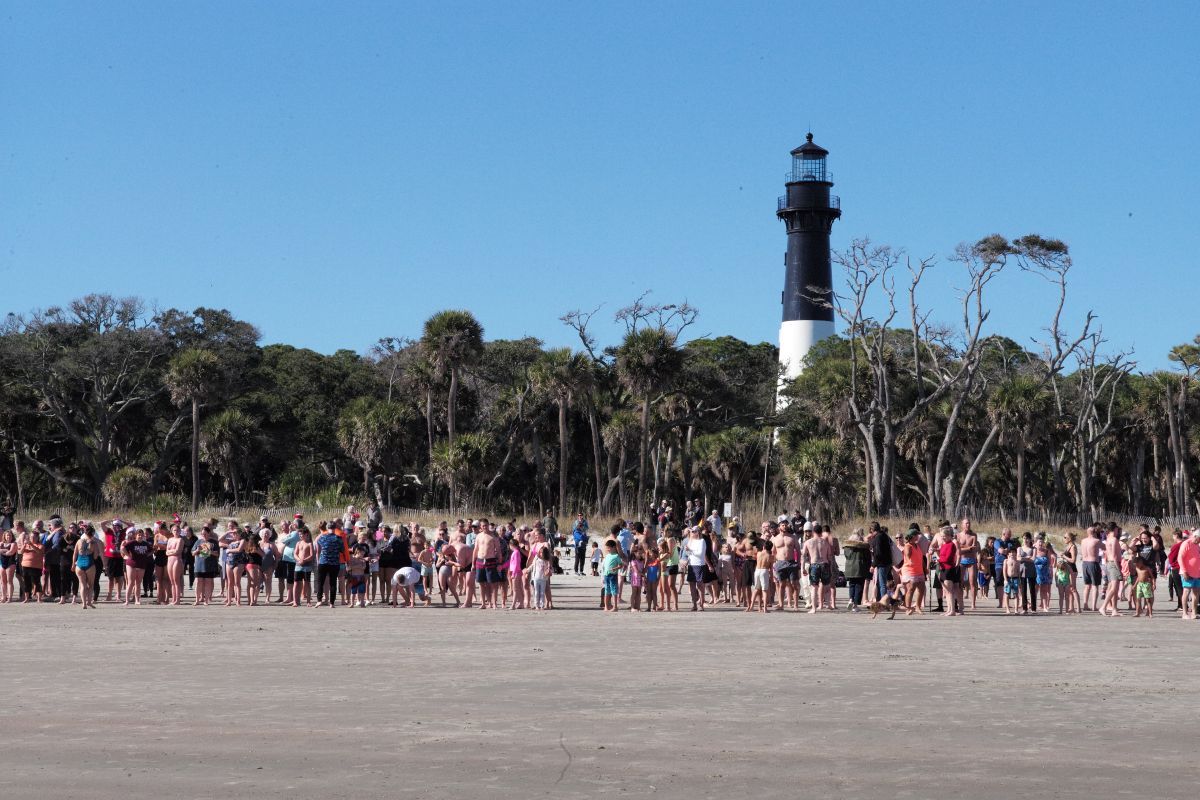By Gordon Fritz
The South Carolina state tree, the Sabal Palm or Cabbage Palmetto (Sabal palmetto) stands out along the streets of Beaufort, or from within the maritime forests across the Lowcountry and throughout the state. The photograph used to illustrate this article was captured on the Sea Islands of Beaufort County.

The month of July is when the small white flowers explode in large clusters beneath the rounded crown of each palmetto. These trees sometimes grow together in groupings as seen on Hunting and Fripp Islands or as single 80 foot giants under and through our Live Oak canopies. This is a summer ritual exceeded only by the Christmas lights that decorate our roadsides and cityscapes in December. The annual reproductive cycle is a timely reminder of the role this tall, stately palm played in assisting America gain her independence. We remember her pliable, resistant trunks that withstood the English gunfire and cannons that protected our patriots at Fort Moultrie – leading to an American victory.
Today we see her role not only as part of our state flag and our history, but as a part of our everyday landscape – in our forest and parks and beside our homes.
If we listen closely as we pass beneath this lovely palm, we can hear the honey bee and see the wasp and nectar sipping insects gathering sustenance from her blooms. And in the fall, we can watch the flocks of cedar waxwings and other birds harvest the fleshy drupe seeds insuring that the Palmetto will continue to grow in the Lowcountry.
This is the time that South Carolinians can enjoy the sweet smell, lush summer image and delicate honey of the Palmetto.
Gordon Fritz is a resident of Beaufort, SC, a biologist and nature photographer as well as a graphic artist.





